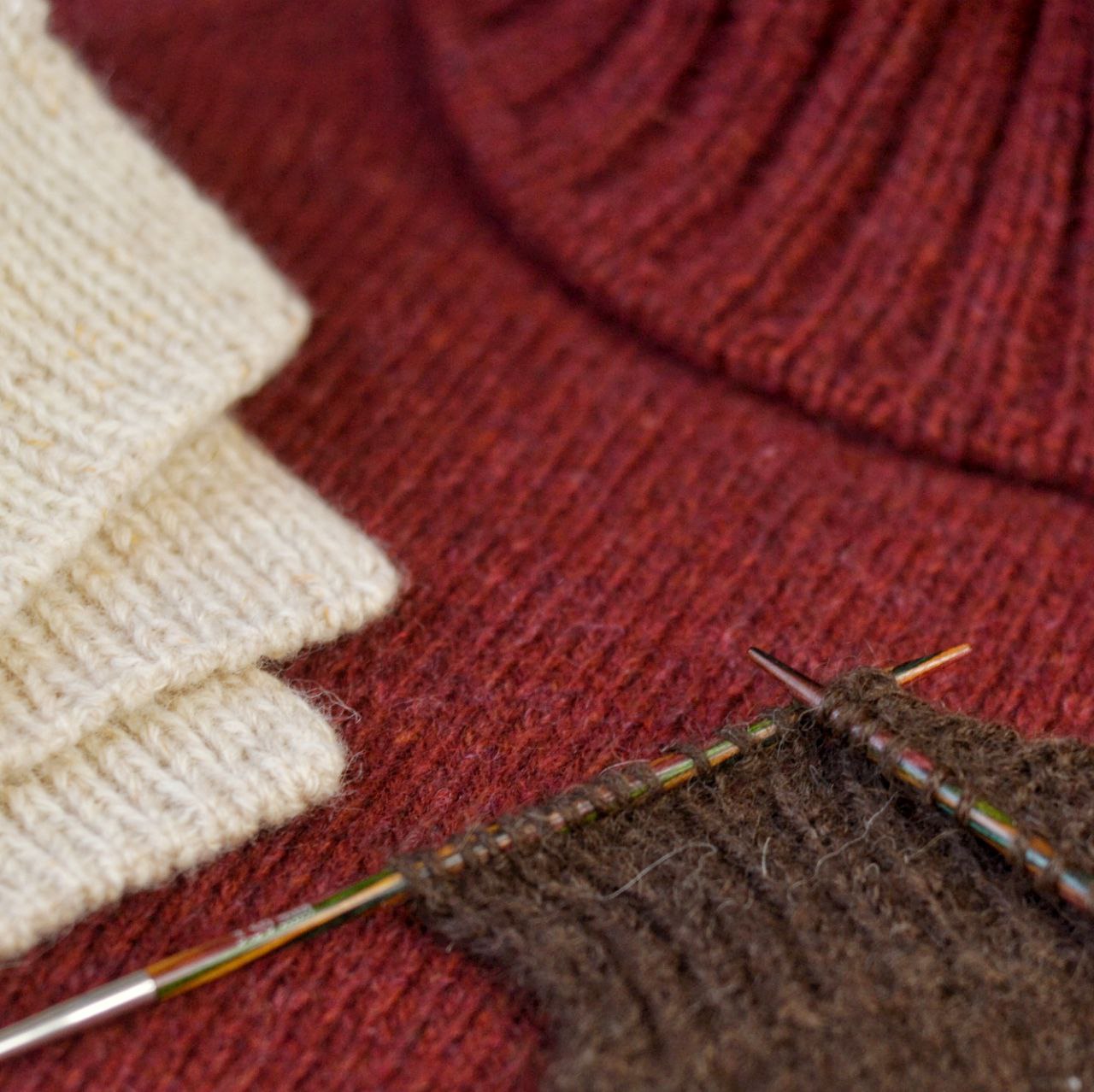
The main function of the ribbing is to create an elastic edge of the fabric. To get an elastic and even edge of the ribbing, it is advisable to bind off stitches using a yarn needle. In this article, we will review the tubular bind off, which imitates the Italian cast on, provides a beautiful “factory” edge and at the same time retains the elasticity of the ribbing.
Starting conditions.
1. There is ribbing k1p1 on the knitting needle: knit 1, purl 1.
2. Measure the working yarn 3.5…4 times longer than the width / circumference of the fabric edge.
3. Cut the working yarn and thread it into a yarn needle.
The tubular bind off consists of four steps:
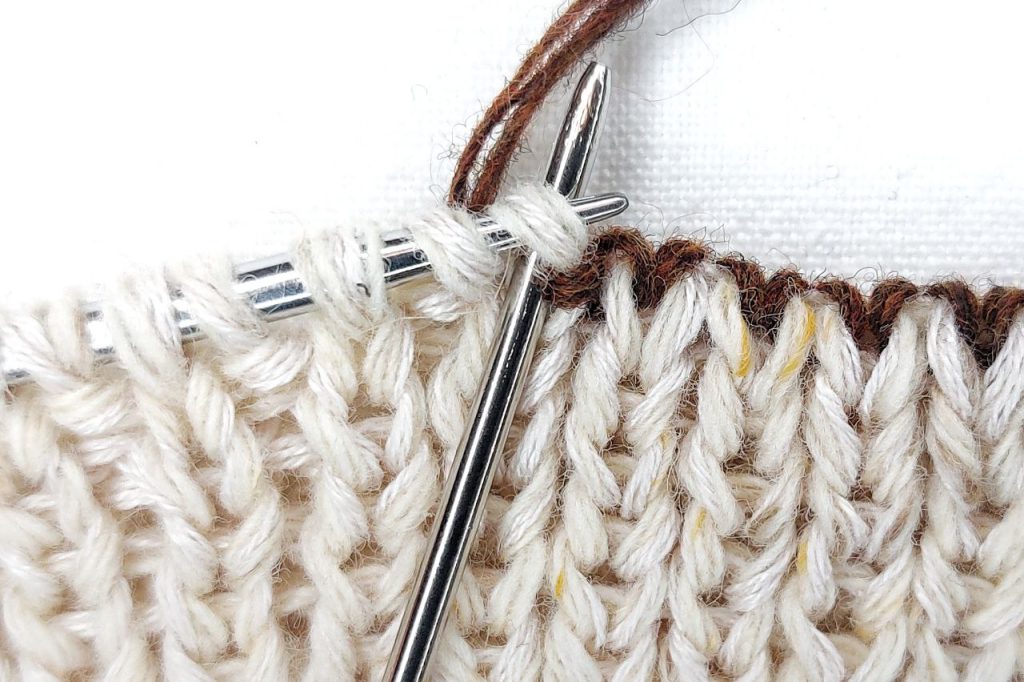

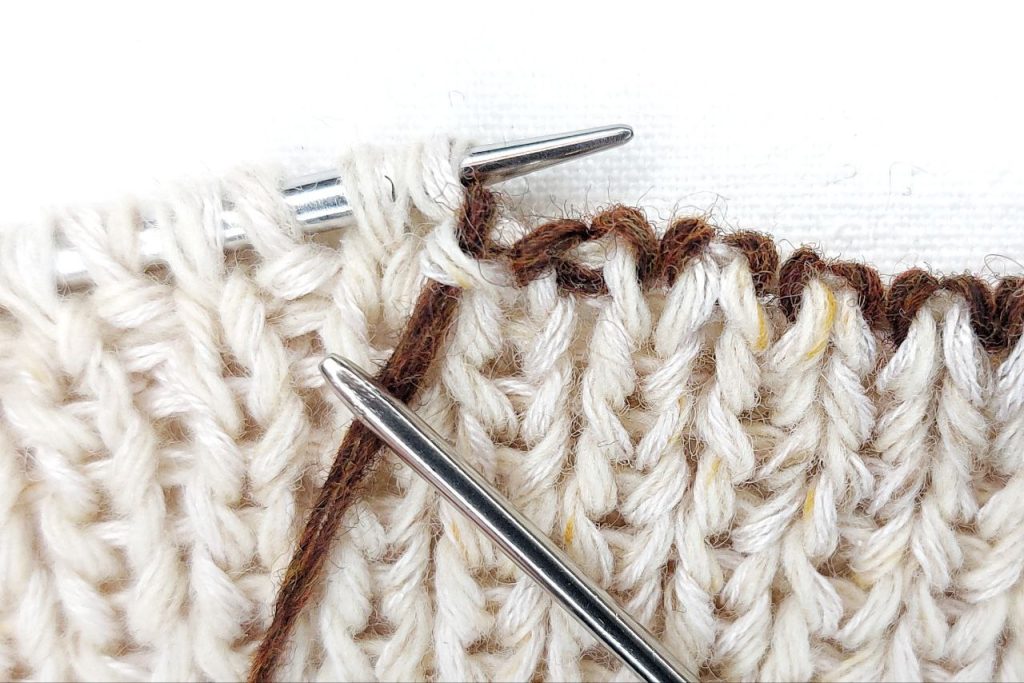
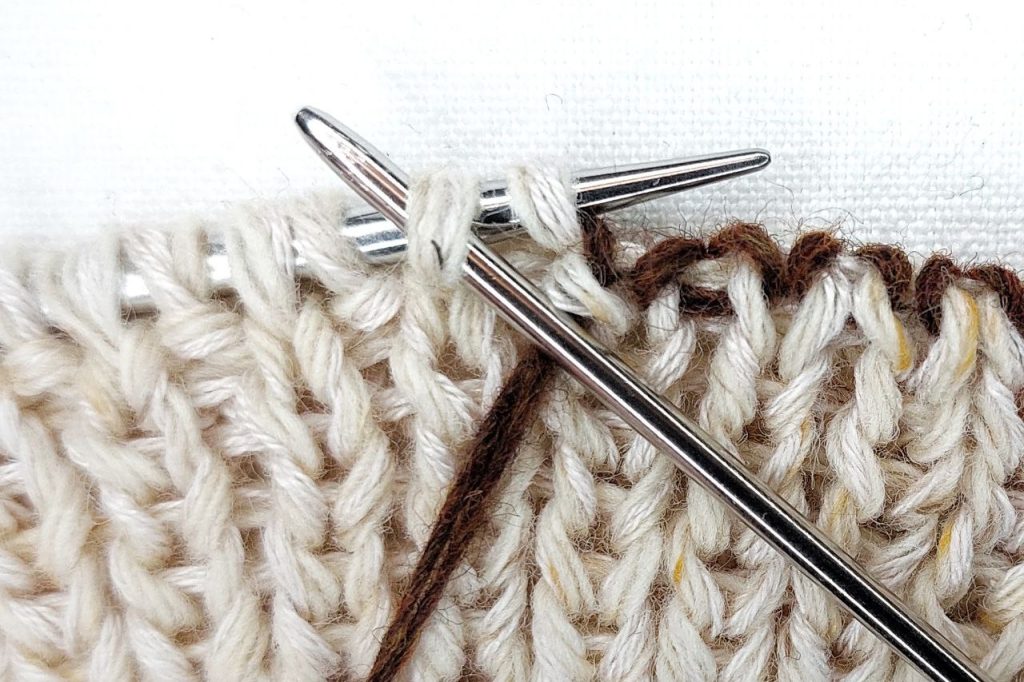
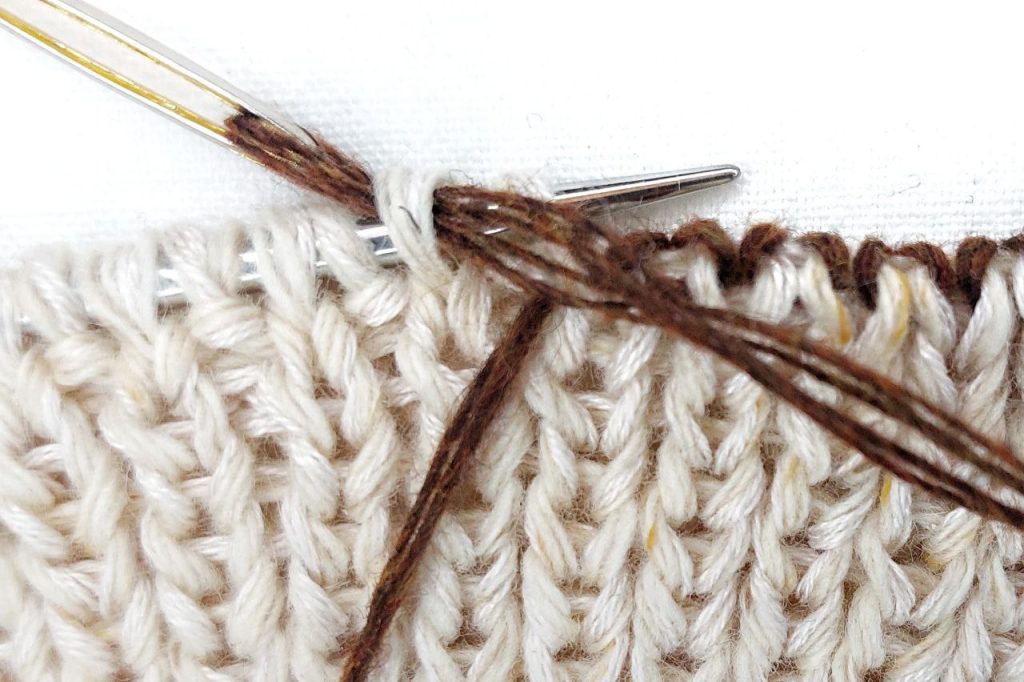
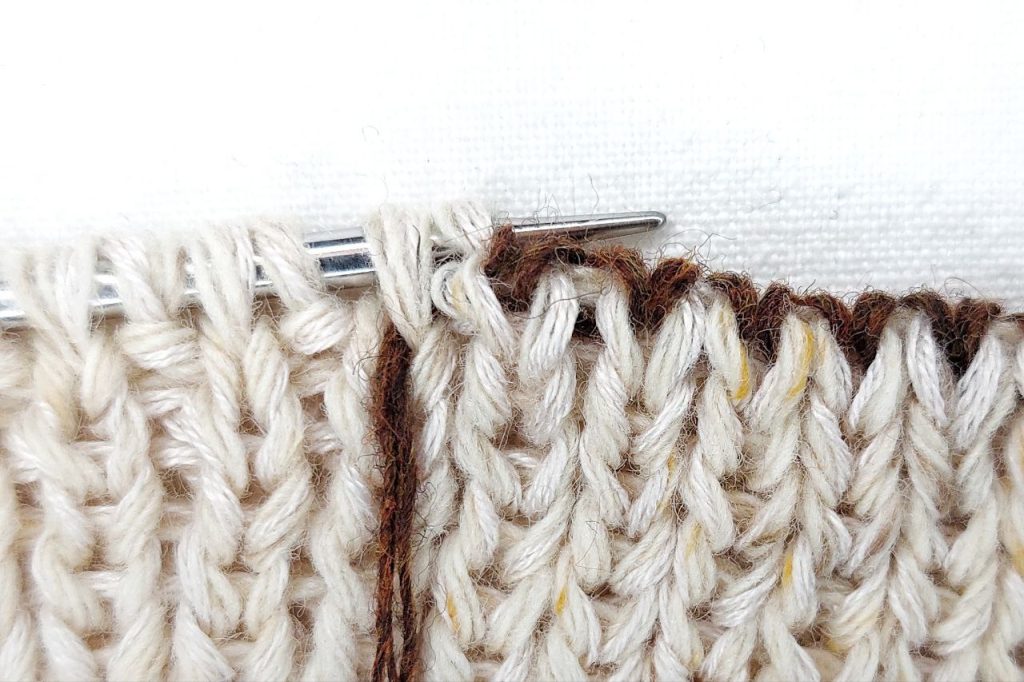
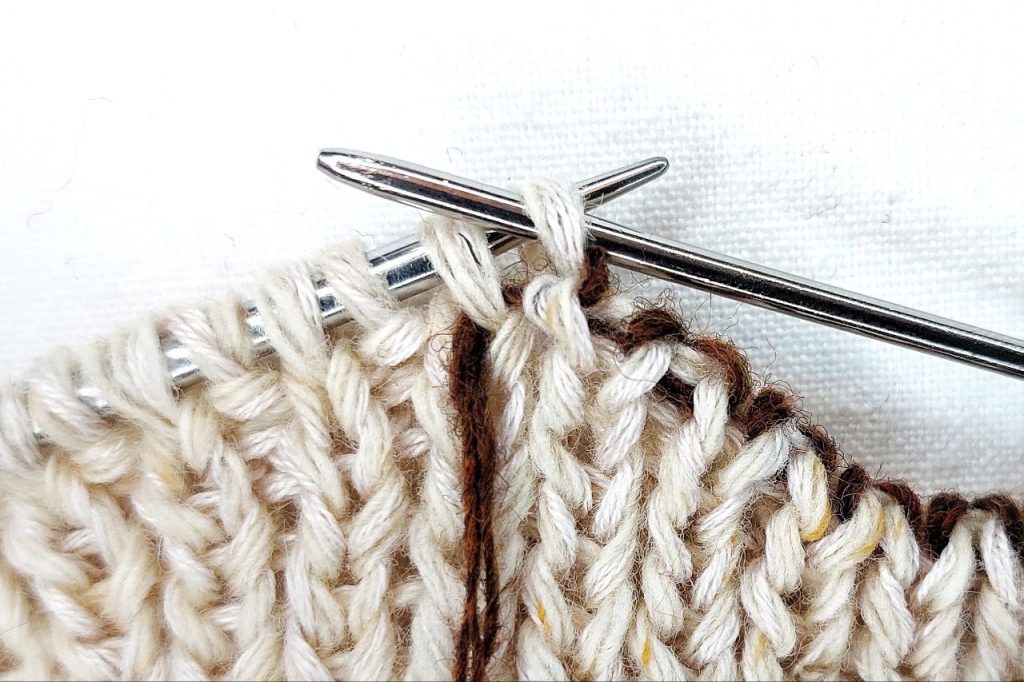
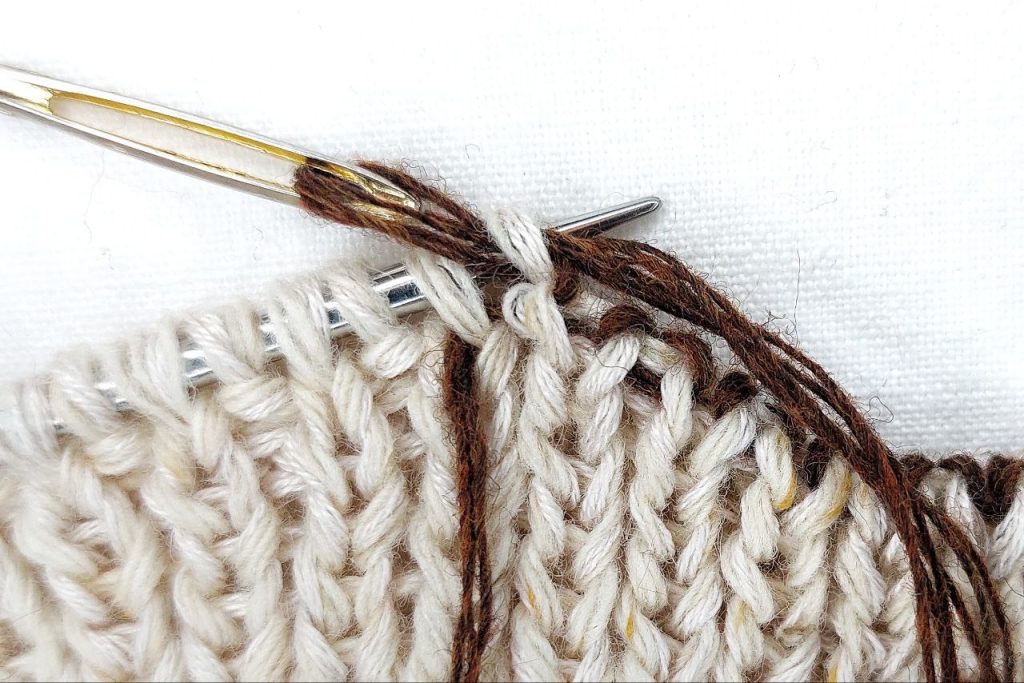
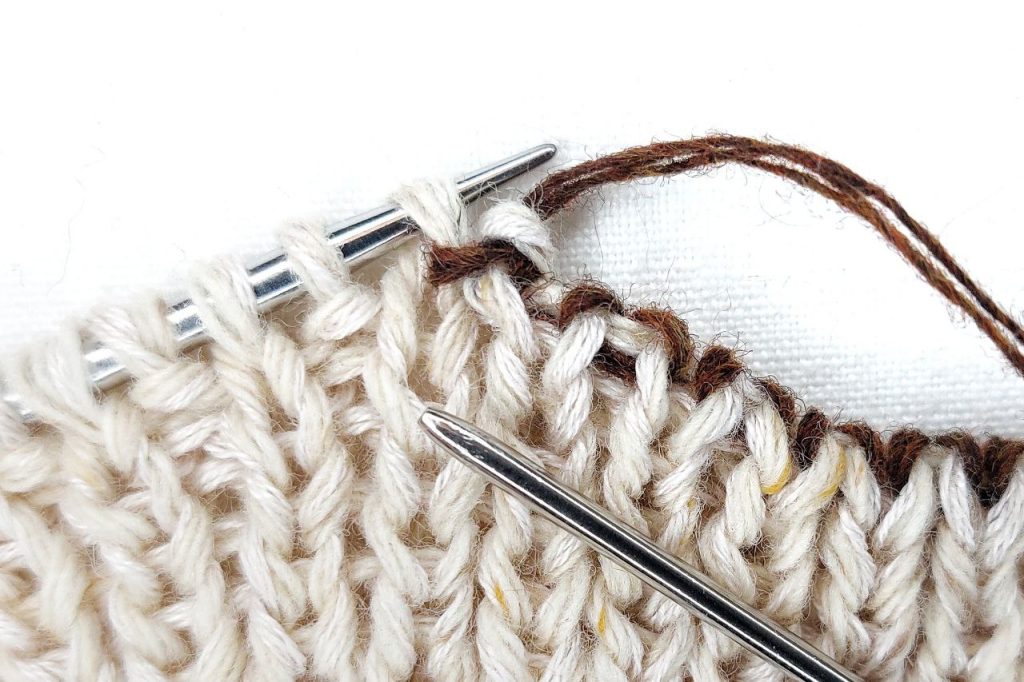
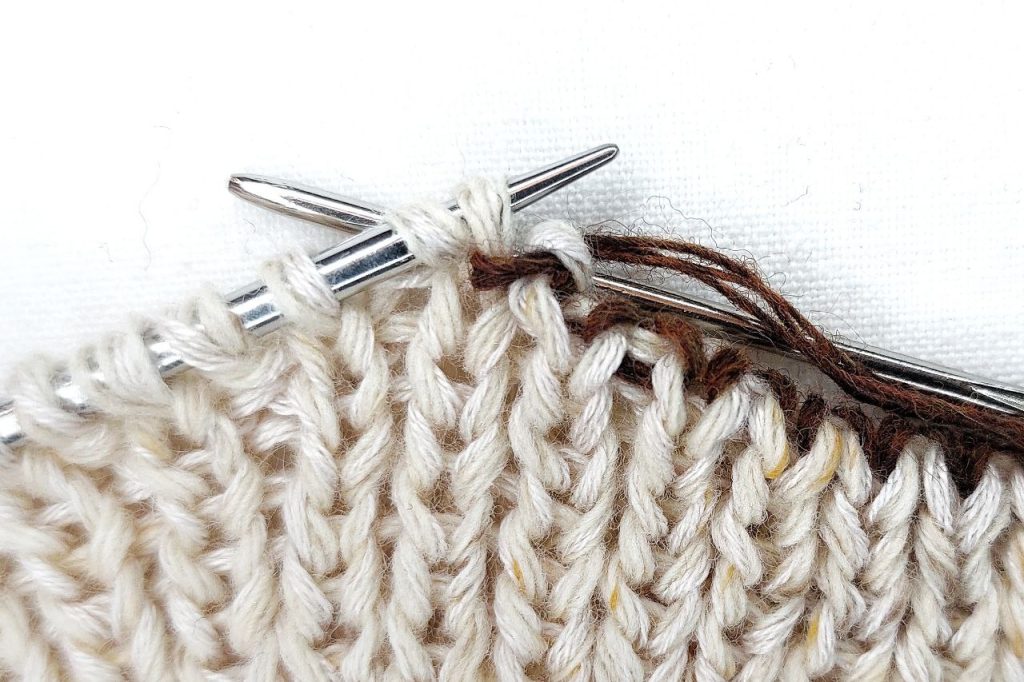
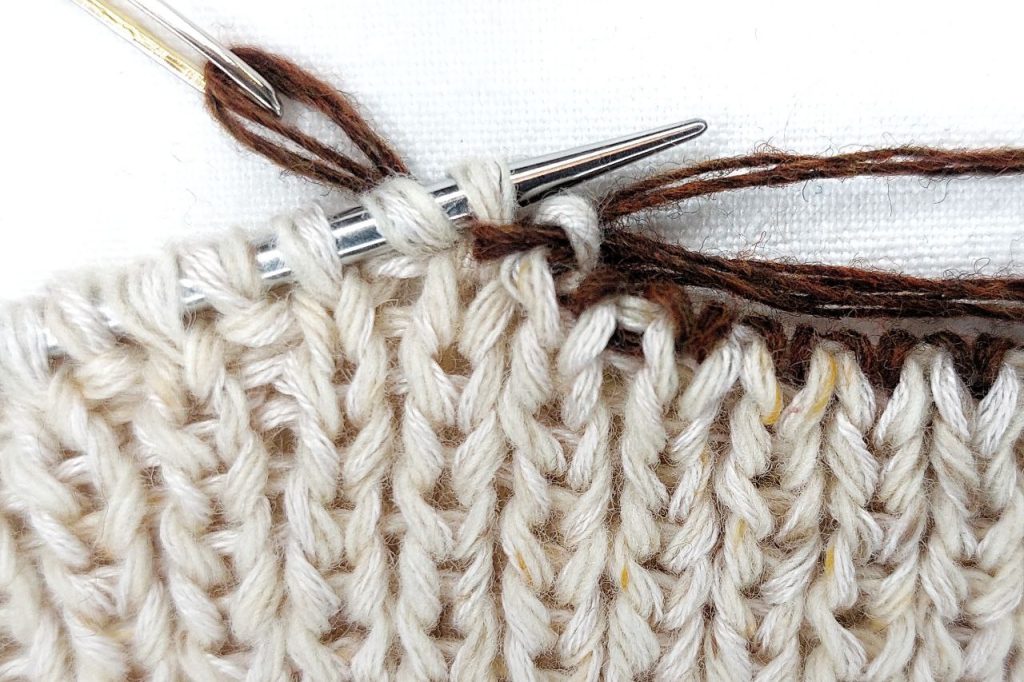
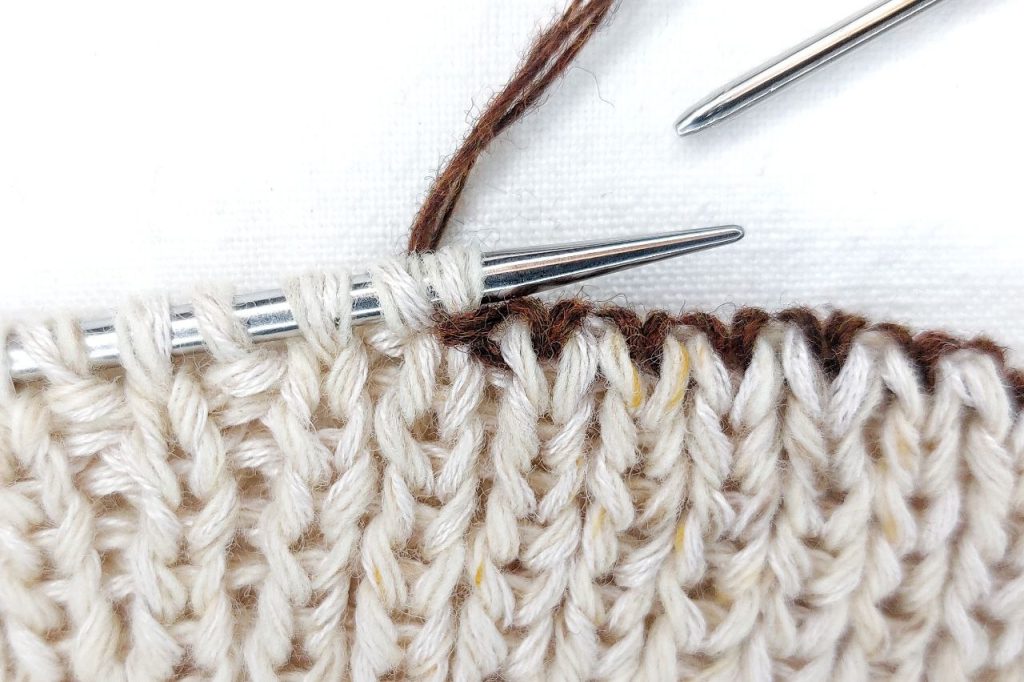
Having completed all four steps, repeat Step 1 to Step 4.
We can simplify the Step 4 and split it into two:
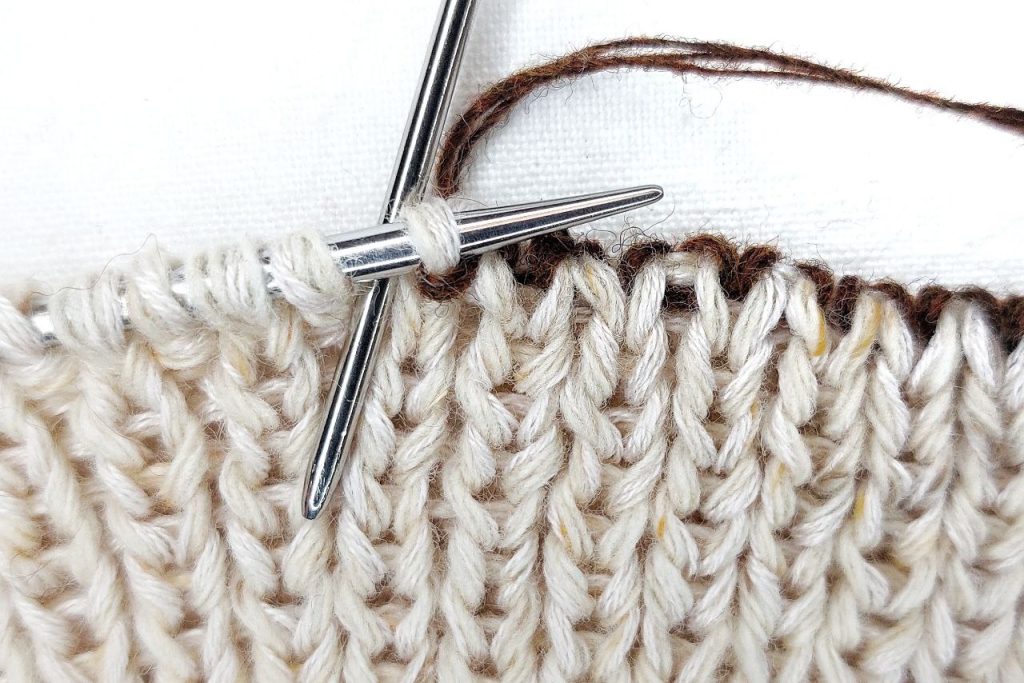
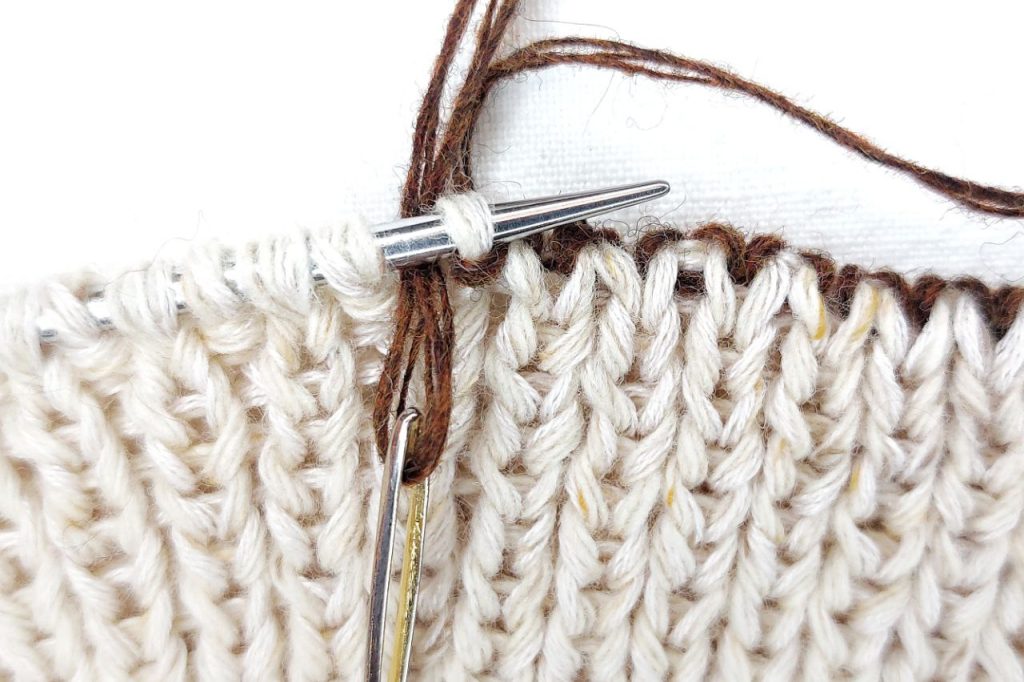
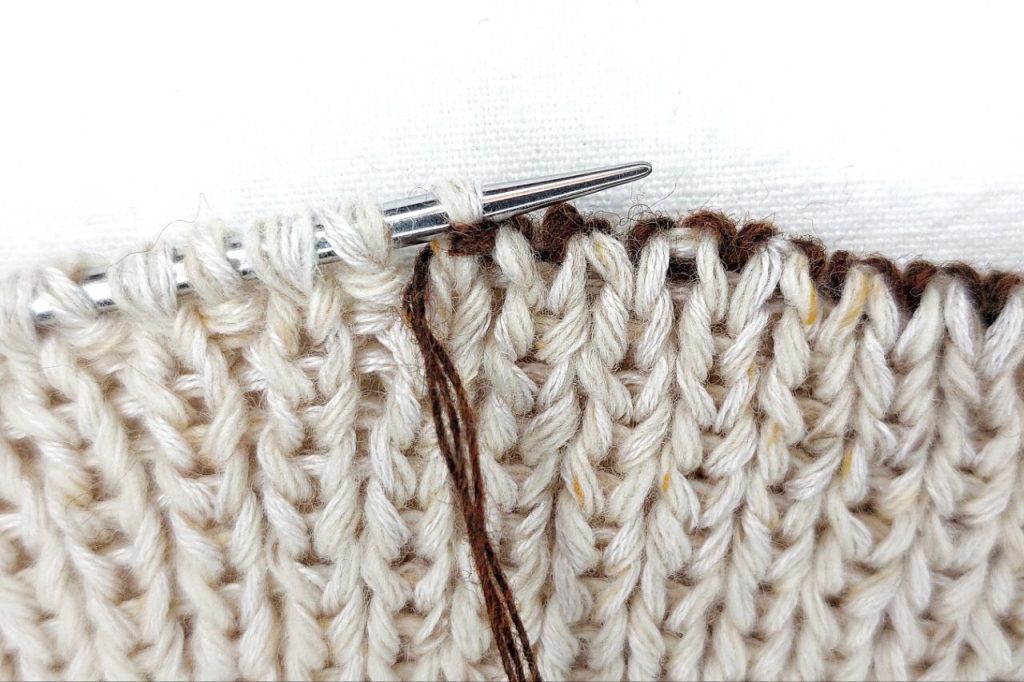
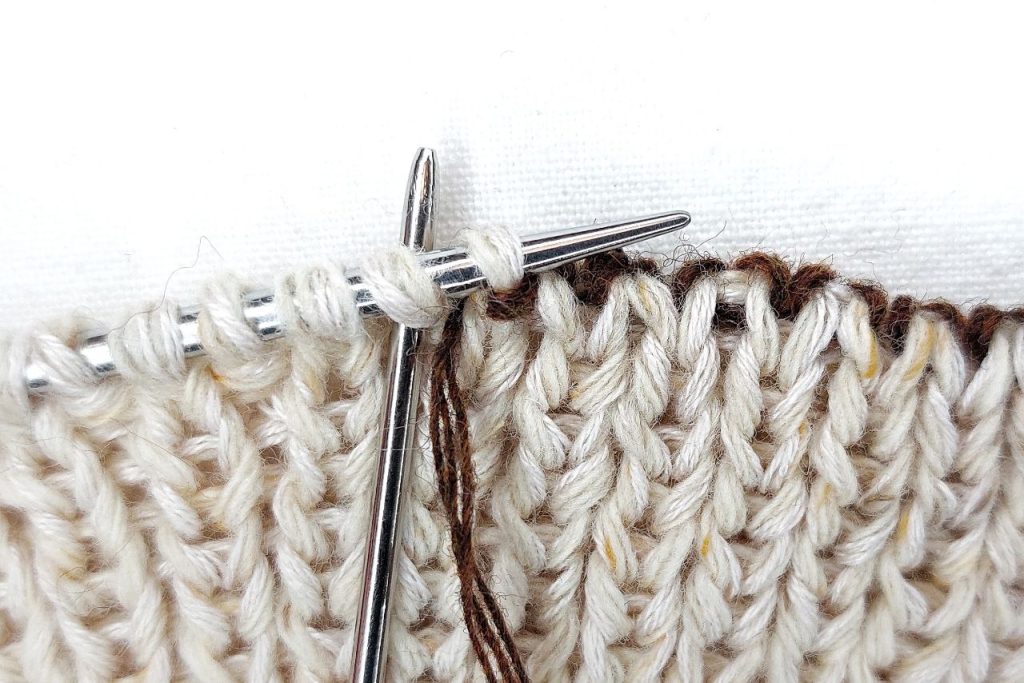
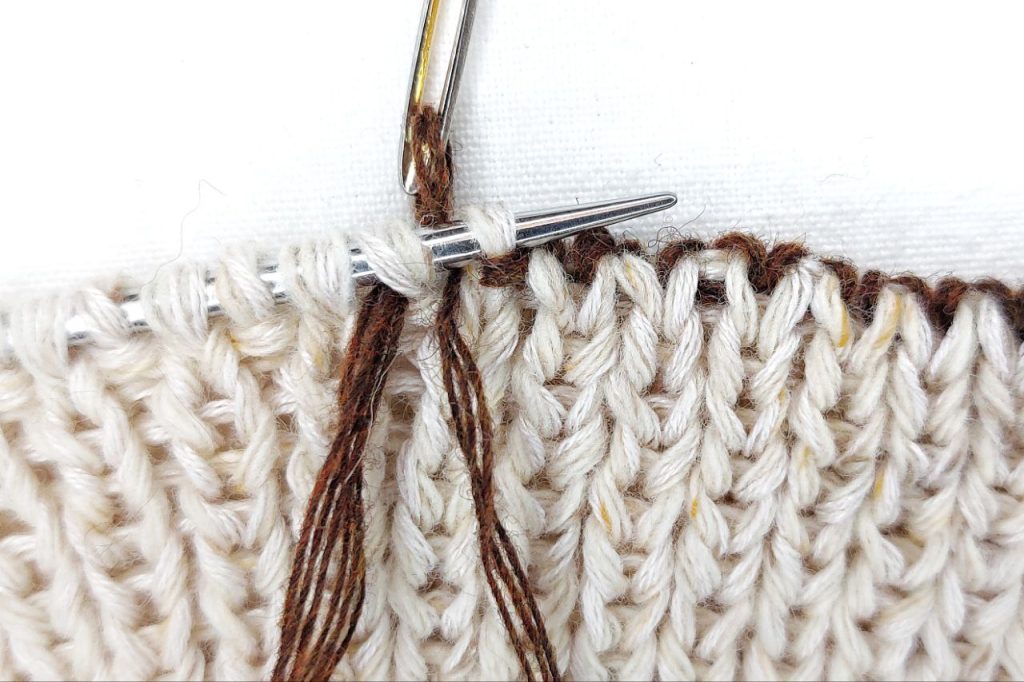
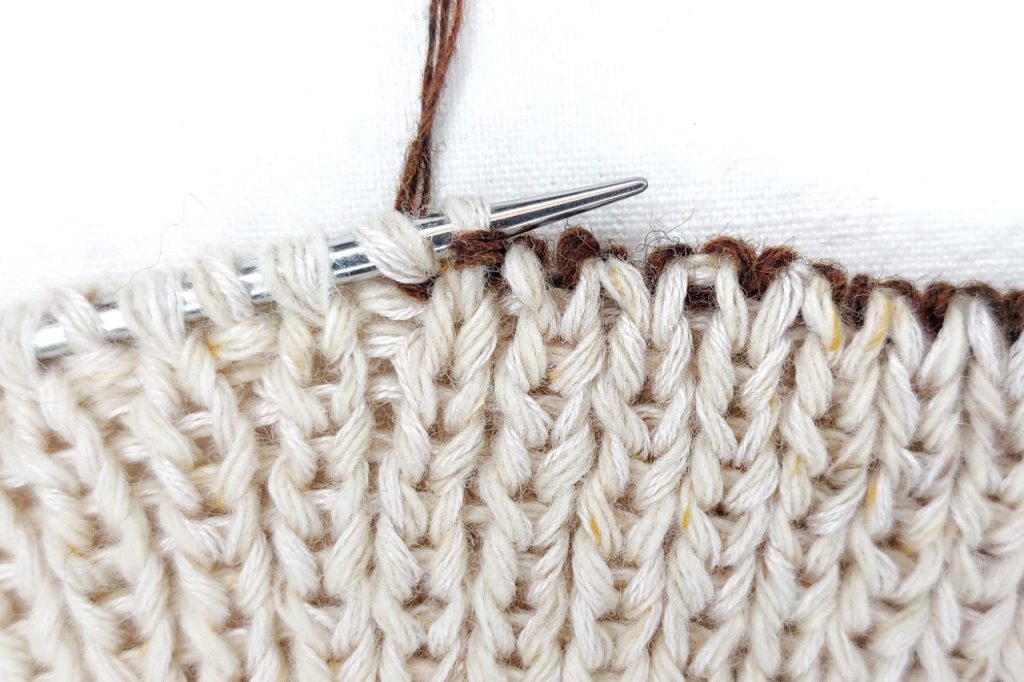
As a result, we get the same looks at the end of the work rapport:
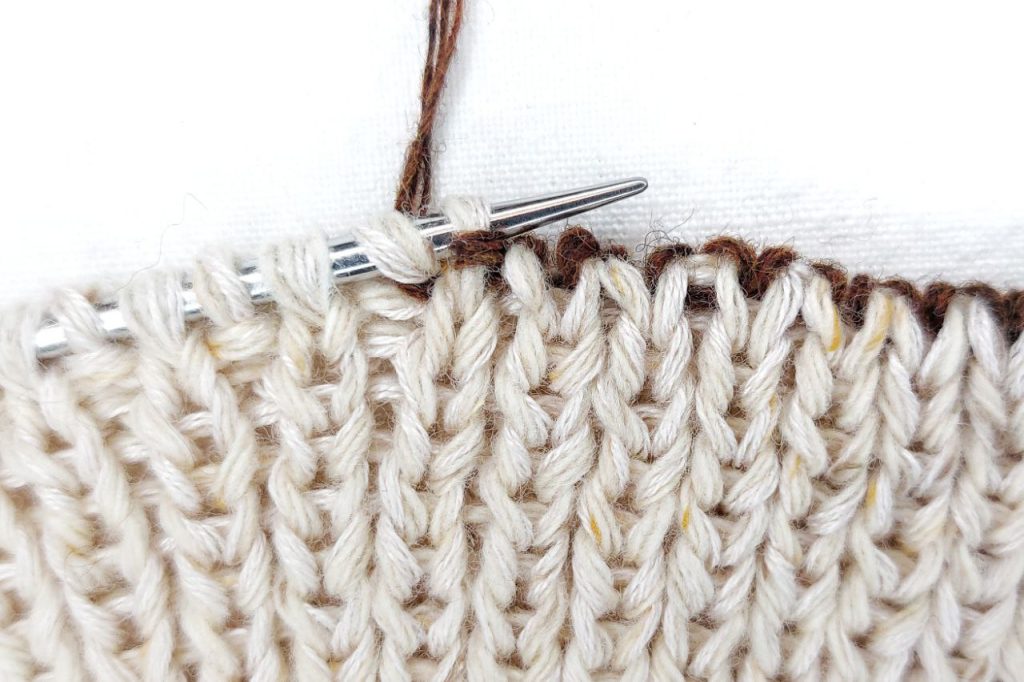

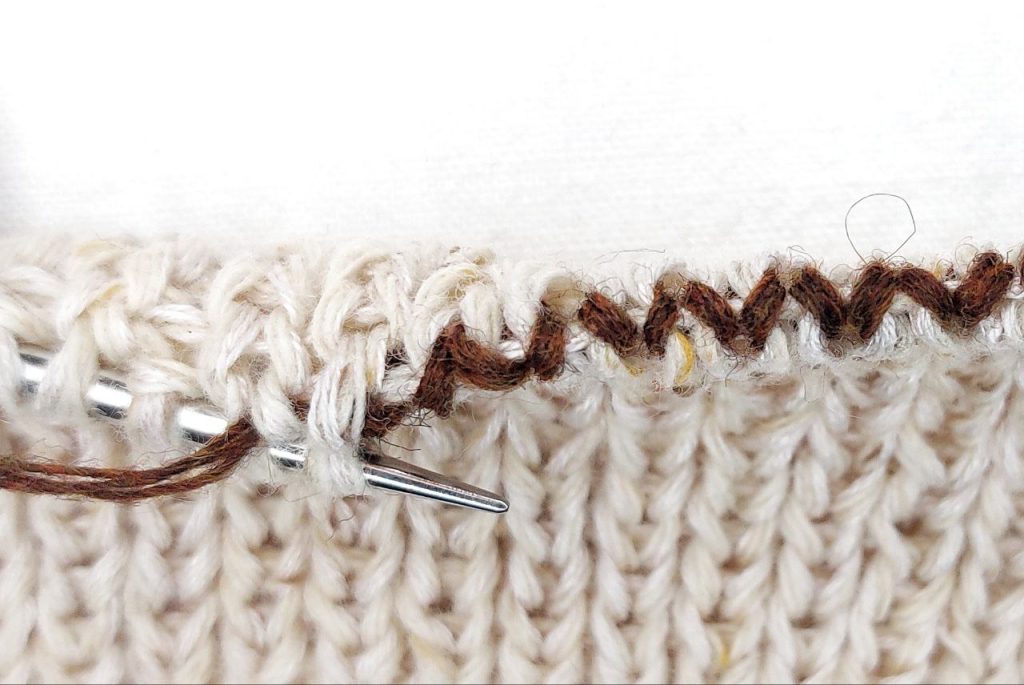
If you “see” the stitches well, you can work the tubular bind off as follows.
At the moment of inserting the yarn needle into the stitch for the first time (step 2 and step 4), drop it off from the knitting needle. Re-inserting the yarn needle into the stitch (step 1 and step 3) is already done in the fabric.
This method, in my opinion, gives a more even edge line.
If you purl stitches throught the back loop with eastern or “grandmother’s” way (they are located left loop in front on the knitting needle), pay attention to the yarn needle inserting, do not twist the stitches when bind off.
You can work one or two pairs of double (hollow) ribbing rows before tubular bind off. This will provide a rounder edge to the ribbing.
Double (hollow) ribbing is a type of ribbing with slipped stitches. Rapport consists of two stitches and two (pair) rows / rounds.
The method is that each stitch is worked alternately in only one of the two rows. If the stitch was knitted in the first of two rows, then in the second it is slipped to the right knitting needle. And vice versa – if the stitch was not knitted in the first row, then it must be knitted in the next. The working yarn passes “inside” the fabric when the stitch is slipping.
Double Ribbing (circular knitting):
Round 1: *knit 1, slip 1 with yarn in front. Repeat from * to the end of the round.
Round 2: *slip 1 with yarn in back, purl 1. Repeat from * to the end of the round.
Double Ribbing (flat knitting).
Row 1 (RS): *knit 1, slip 1 with yarn in front. Repeat from * to the end of the row.
Row 2 (WS): repeat Row 1.
Return to the ribbing binding off.
If you want to get a straight edge without thickening, after working the wish depth of the ribbing, move to the tubular bind off.
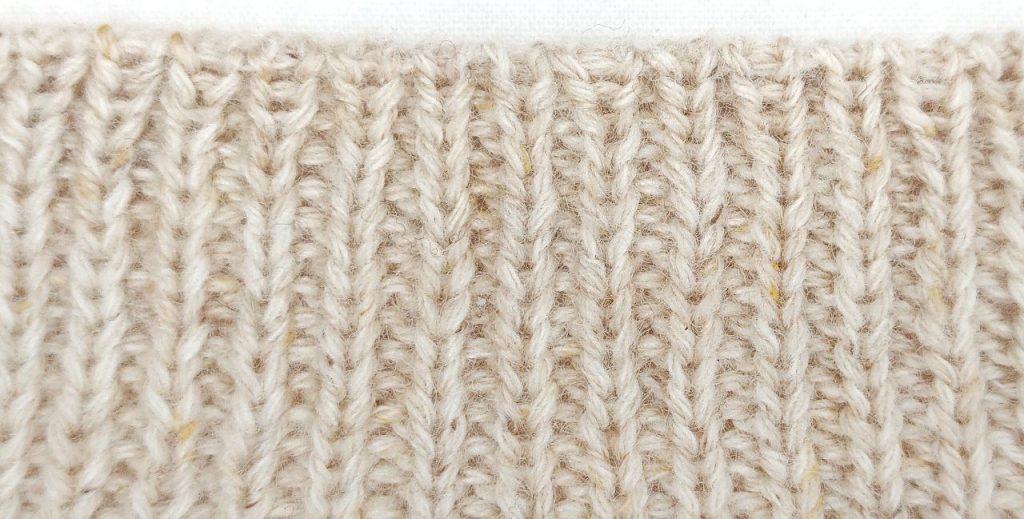
If you want to get a little thickening along the edge of the ribbing, make the edge more rounded, make one pair of the double ribbing rows, and then bind off.
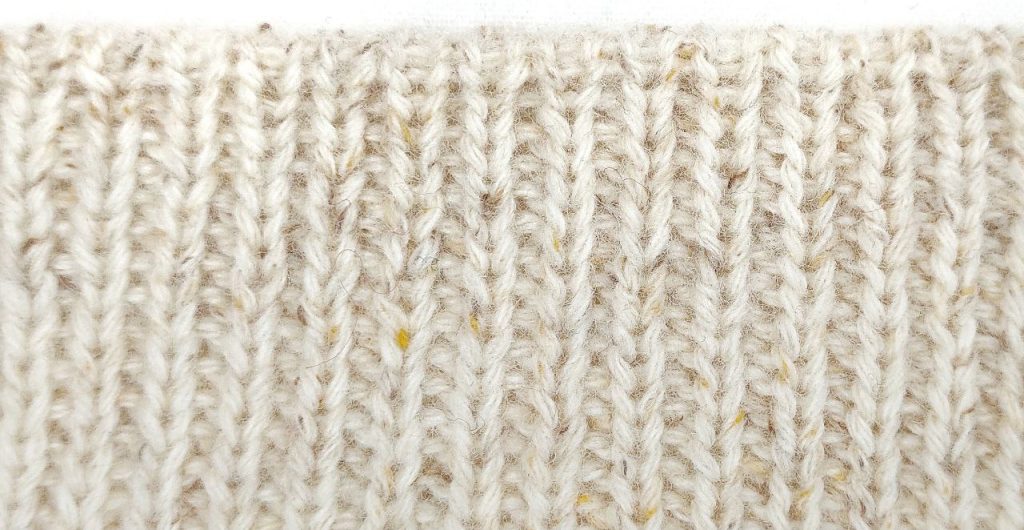
If you want to get a voluminous hollow roll along the edge of the ribbing, make two pairs of the double ribbing rows, and then bind off.
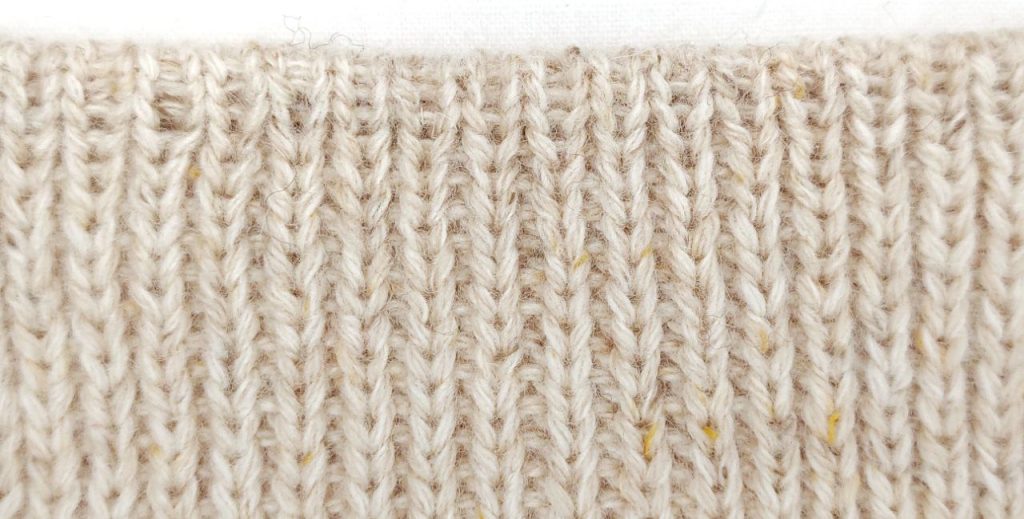
All three presented options can be used in the fabric. For knitting flat non-elastic ribbing (for example, from carded yarn), it is more suitable to bind off without double ribbing. The more elastic the ribbing is in the fabric, the more pairs of double ribbing rows you can make before binding off.
The tubular bind off can be used to bind off the ribbing k2p2.
In this case, before binding off the stitches, it is necessary to pass the ribbing k2p2 to the ribbing k1p1.
Starting conditions.
There is the ribbing k2p2 on the knitting needle: knit 2, purl 2.
Pass row / round: *knit 1, cross next two stitches on the left knitting needle to the LEFT (the knit stitch moves to the second place on the left knitting needle in front, the purl stitch moves to the first place in back), purl 1, knit 1, purl 1. Repeat from * to the end of the row / round.
We have the ribbing k1p1 on the knitting needle after completing a Pass row / round.
Then we can bind off the stitches using the algorithm presented above (including using a double ribbing rows).
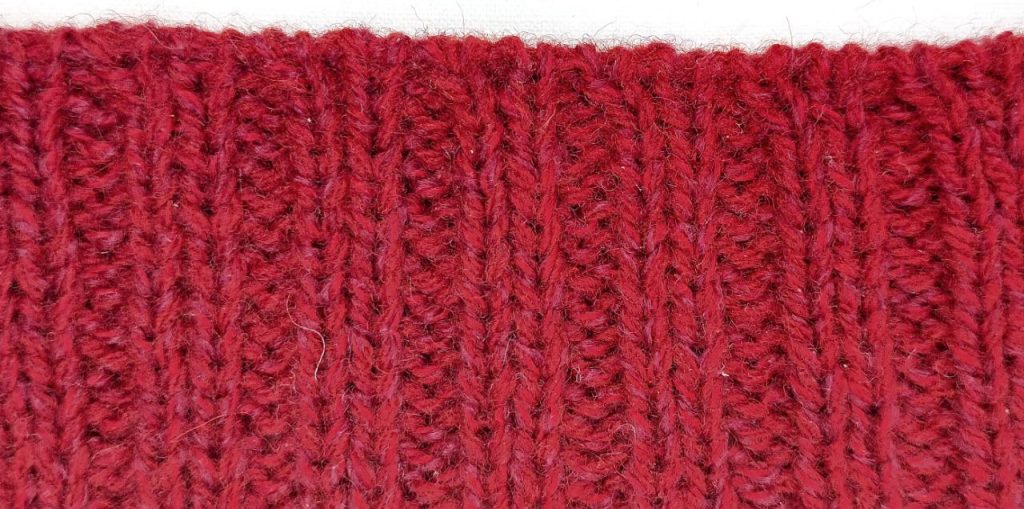
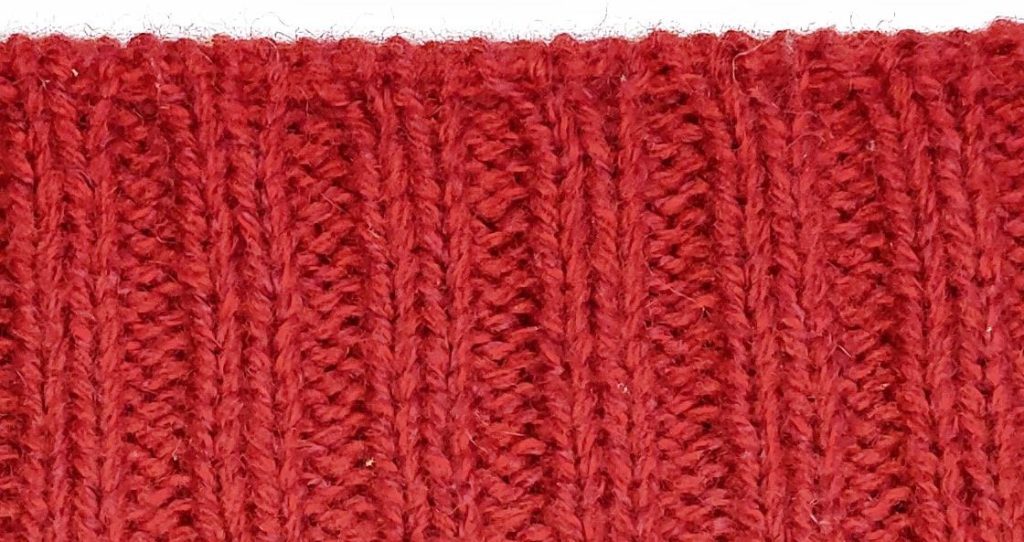

When Pass row is done, the edge of the ribbing becomes tighter. Therefore, the elasticity of the ribbing is a prerequisite for using this method.
If you are working a flat/non-elastic ribbing, the yarn does not provide elasticity and the tubular bind off tightens the edge, you can increase the stitches before binding off. So that at the same time the edge does not fald, pass to the double ribbing. In this case, two Pass rows / rounds must be worked.
The passing from the ribbing k2p2 to the double ribbing (circular knitting):
Pass round 1: *knit 2, slip 1 with yarn in front, M1L, slip 1 with yarn in front. Repeat from * to the end of the round.
Pass round 2: *slip 1 with yarn in back, M1R (increase the purl stitch), 1 slip 1 with yarn in back, purl 1, slip 1 with yarn in back, purl 1. Repeat from * to the end of the round.
The passing from the ribbing k2p2 to the double ribbing (flat knitting):
Pass row 1 (RS): *knit 2, slip 1 with yarn in front, M1L, slip 1 with yarn in front. Repeat from * to the end of the row.
Pass row 2 (WS): *knit 1, slip 1 with yarn in front, knit 1, slip 1 with yarn in front, M1L, slip 1 with yarn in front. Repeat from * to the end of the row.
M1R and M1L – increase stitches into the bar between two stitches.
M1R – Make 1 Right: on RS / WS insert left knitting needle from back to front, under the bar between next stitch on left knitting needle and last stitch on right knitting needle; knit / purl this bar through the front loop.
M1L – Make 1 Left: on RS / WS insert left knitting needle from front to back, under the bar between next stitch on left knitting needle and last stitch on right knitting needle; knit / purl this bar through the back loop.
Thus, 4 stitches of the ribbing k2p2 were passed to 6 stitches of the double ribbing. Next, I recommend to work one or two pairs of the double ribbing rows and only then bind off the stitches.
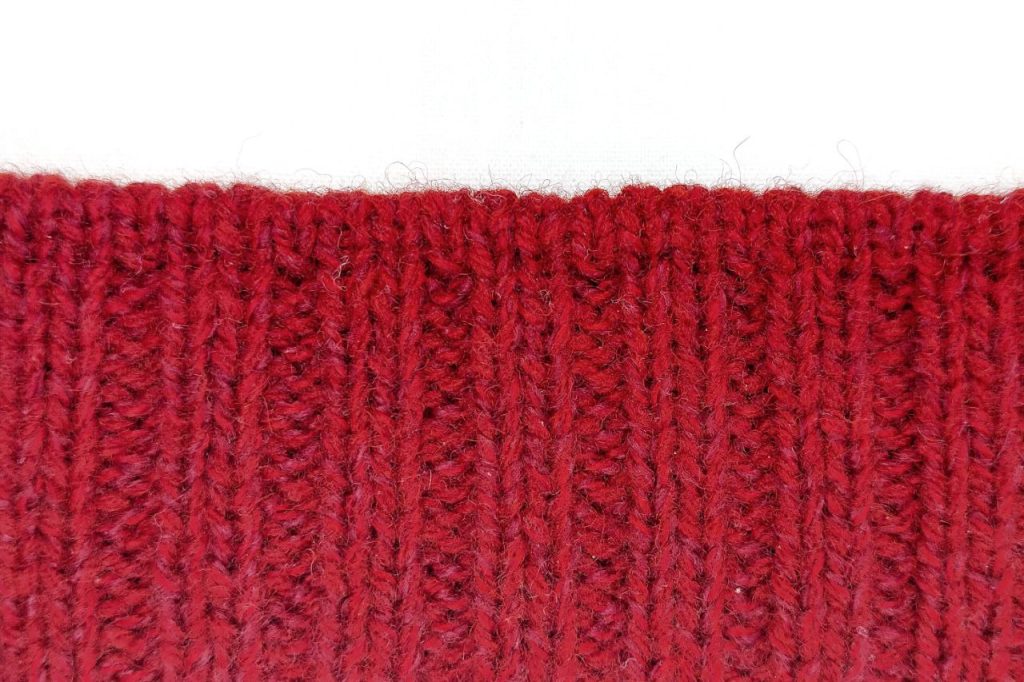
Another option of the non-elastic ribbing bind off is the stockinette stitch hollow roll.
Transfer the ribbing to the stockinette stitch, work one row / round with decreasing every fourth stitch.
Transfer row / round: *knit 2, knit 2 together. Repeat from * to the end of the row / round.
Thus, 4 stitches of the ribbing k2p2 were transferred to 3 stitches of the stockinette stitch.
Next, work 4-5 rows / rounds of the stockinette stitch and, using a yarn needle, graft the open stitches of the last worked row / round to the transfer row / round, matching stitch for stitch. Grafting is done on the wrong side.
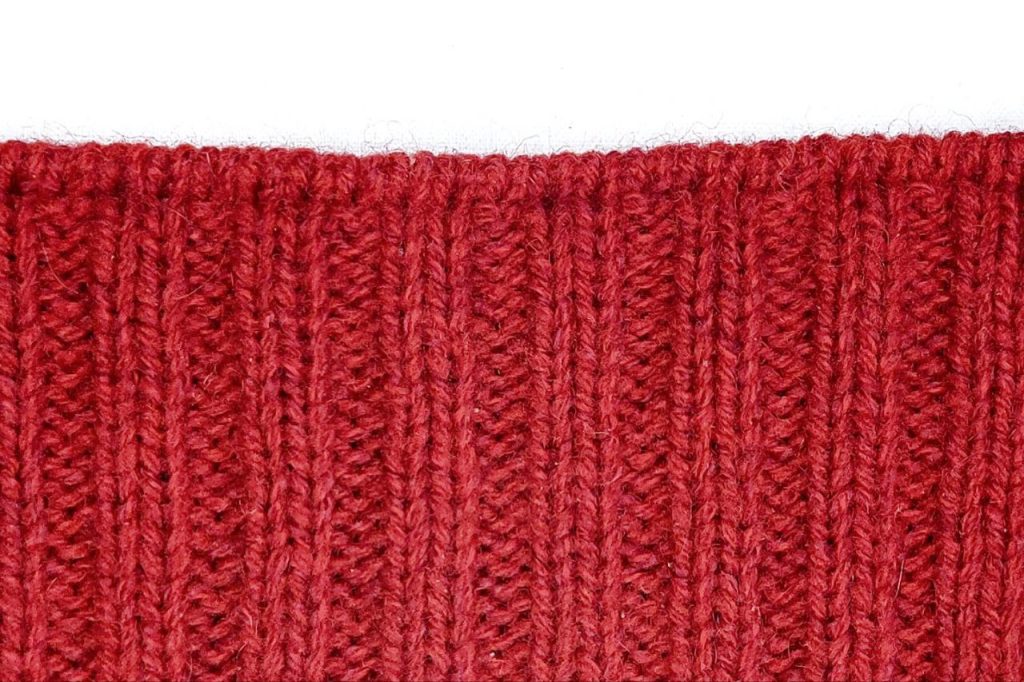
(you will need to select the desired subtitle language)
This article presented the main ways of the tubular bind off and the examples of their use. I recommend working a swatch before starting work and choosing which method is suitable for yarn and your future fabric.